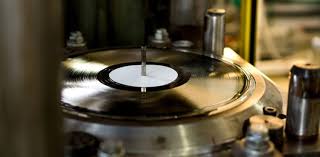Vinyl Record Production: A Complete Guide to How Modern Records Are Made

Vinyl Record Production has evolved into a fascinating blend of craftsmanship and technology, attracting artists, collectors, and music enthusiasts who appreciate the warmth and authenticity of analog sound. If you’re curious about how vinyl records go from a mastered track to a physical disc you can hold, this guide walks you through every stage with clear, engaging detail—just like the long-form, structured writing style you prefer.
Understanding the Rise of Vinyl Again
Vinyl’s resurgence isn’t just nostalgia. It’s about sound quality, physical ownership, and the artistic value of an album that feels like a tangible piece of music history. In today’s digital-heavy world, vinyl brings depth, warmth, and a sense of presence you simply can’t recreate on streaming platforms.
This growing demand has also led to advancements in production while preserving the artisanal feel that makes vinyl so unique.
The Mastering Stage
Before anything physical is made, the music must be mastered specifically for vinyl. This step ensures that the sound profile suits the format. Vinyl has physical limitations—too much bass or extreme highs can distort—so engineers adjust levels to maintain clarity and dynamic range.
Each track is carefully polished to ensure the record plays cleanly from the outer grooves all the way to the inner ones, maintaining consistent audio quality.
Lacquer Cutting
Mastering is followed by lacquer cutting, where the audio is engraved onto a lacquer-coated aluminum disc. This is one of the most delicate steps in vinyl record production. A cutting lathe etches microscopic grooves into the lacquer based on the audio signal.
Every vibration, nuance, and frequency is captured through those grooves, making the lacquer master the foundation of the entire pressing process.
A single slip, miscalibration, or environmental issue—like dust or static—can ruin the master, which is why top engineers work in highly controlled rooms.
Creating the Metal Stamper
Once the lacquer is perfected, it moves into the electroplating phase. The lacquer is coated in metal, usually nickel, to create a negative impression of the grooves. This is known as the stamper.
The stamper is what presses each record, so it must be flawless and durable enough to handle hundreds or thousands of pressings.
Some plants create multiple stampers if the production run is large, ensuring consistent quality across all copies.
Vinyl Pressing
This is the stage most people imagine when they think of how records are made. Vinyl pellets—usually PVC—are heated into a puck-like form. This puck is placed between two stampers and pressed under high pressure, imprinting the grooves on both sides.
The vinyl is then cooled and trimmed into perfect circles.
The result: a fully grooved record that carries the physical imprint of the music.
Production facilities often have quality control staff listening to sample pressings to check for issues like surface noise, warping, or pops.
Labeling and Visual Design
Vinyl isn’t just about audio; it’s also a visual experience.
Labels are baked into the record during pressing, ensuring they never peel. Meanwhile, album artwork, jackets, and inserts offer space for storytelling, photography, lyrics, or collectible designs.
This is where creativity shines. Artists often use vinyl releases to add special touches like foil prints, gatefold covers, or colored vinyl variants that make each edition feel unique.
Colored, Splatter, and Special Vinyl
Today’s vinyl record production isn’t limited to traditional black.
Pressing plants can create:
- Solid color records
- Marble or swirl finishes
- Splatter patterns
- Transparent discs
- Limited-edition multi-color blends
These options don’t change the sound quality much, but they significantly enhance collectibility and visual appeal.
Test Pressings
Before a full run, plants produce a handful of test pressings. Artists, labels, or producers listen carefully to ensure everything sounds accurate.
Test pressings are among the most valuable vinyl items because they’re limited and represent the blueprint for the final release.
Packaging and Final Quality Checks
After pressing and cooling, each record is sleeved in protective inner jackets and placed into the album cover.
Plants also run warp checks, surface inspections, and occasionally spin tests to ensure each copy is playable and clean.
Proper packaging protects the vinyl from dust, scratches, and bending during shipping.
Why Vinyl Record Production Still Matters
Even with all the digital advancements in music, vinyl remains a symbol of craftsmanship. It demands patience, skill, and attention to detail at every stage.
Listeners appreciate the intentionality of dropping a needle, flipping sides, and experiencing music as a complete body of work rather than skipping through tracks.
For artists, releasing on vinyl represents prestige—a way to immortalize their work. For fans, it’s a return to the soul of music.
Final Thoughts
Vinyl Record Production is more than a manufacturing process; it’s an art form preserved through decades of innovation. From mastering to cutting, pressing to packaging, every step reflects a deep respect for sound quality and musical expression. Whether you’re a collector, artist, or curious listener, understanding how vinyl is created enhances your appreciation of the final product.




